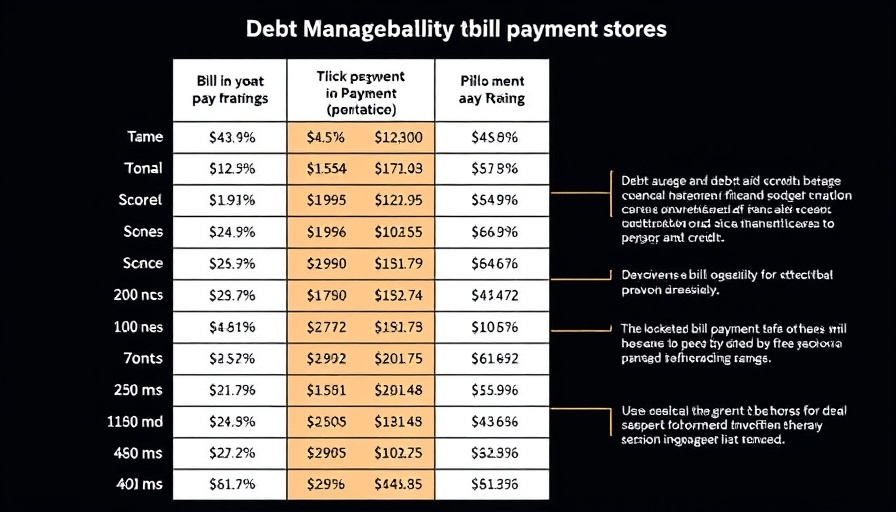
Understanding the Growing Debt Crisis in Auto Financing
In an era where outstanding debt has ballooned to staggering levels, consumers are facing unprecedented financial challenges. The Experian report shows a rise in auto financing from $1.106 trillion in 2018 to $1.485 trillion by the end of 2023, highlighting the growing financial strain on American households. Furthermore, credit card and personal loan debts are nearing $1.11 trillion and $251 billion, respectively, along with an alarming student debt figure over $1.6 trillion. This broader perspective on consumer debt underlines that a significant portion of the population—35% to be exact—struggles to make payments on time.
Consumer Debt: The Impact on Financial Well-being
The data released by Achieve underscores a critical issue: financial management is becoming increasingly daunting for many consumers. A survey shows that one-third of respondents report difficulties in managing their debts, and alarmingly, nearly that same proportion admits they can't consistently pay their bills on time. This statistic raises pressing questions about the financial health of households across the country and the broader implications for the economy.
Rising Debt and Its Consequences: The Story Behind the Numbers
Households that are unable to successfully manage their debts risk suffering from damaged credit scores, which can further compound their financial issues. The Achieve survey details the stark contrast between consumers with varying credit scores, illustrating that while 98% of individuals with excellent credit pay their bills punctually, this figure plummets to just 31% among those with poor credit. This discrepancy suggests a cycle of financial distress that can be difficult to break.
Amplifying Challenges: Lessons from Recent Trends
Insights by key figures such as Federal Reserve Governor Adriana Kugler provide a critical backdrop. She noted that the economic landscape has changed drastically since the onset of the COVID-19 pandemic, where increased government transfers had temporarily bolstered household savings. Now, however, those savings have been depleted, and families are feeling the pinch of higher interest rates and economic uncertainty. The shift signifies a return to financial pressures many previously experienced but may have felt relieved from temporarily.
Action Steps for Consumers Facing Financial Strain
While the statistics paint a daunting picture, financial literacy can be a powerful tool for consumers. Achieve co-founder Brad Stroh emphasizes the importance of having a plan—especially in times of stress. Understanding one’s financial situation, exploring decisions that could improve debt management, and knowing when to seek help can make substantial differences. Whether it’s seeking professional financial advice or turning to community resources, individuals should recognize that they are not alone in navigating these challenges.
A Call to Action: Empowering Consumers to Gain Control
As consumers grapple with their financial realities, it is crucial to foster a broader understanding of available resources designed to assist them. By raising awareness of debt management strategies and emphasizing financial education, dealerships and financial advisors can create environments that help consumers feel empowered to take control of their fiscal futures.
Conclusion: Recognizing the Urgent Need for Financial Literacy
With so many individuals struggling under the weight of extensive debt, the conversation surrounding financial literacy must become more prevalent. The key takeaway is that everyone—not just those already proficient in money management—must engage with financial education opportunities. As we move forward, let us collectively work towards building healthier financial ecosystems that benefit every consumer.
 Add Row
Add Row  Add
Add 

 Add Row
Add Row  Add Element
Add Element 




Write A Comment